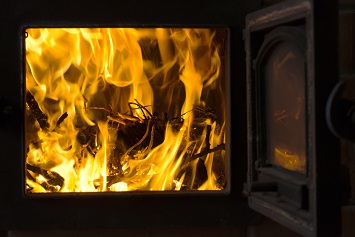Responding to concerns expressed by retailers of certain residential woodburning heaters, the EPA is proposing to provide these entities time to sell these devices beyond what was allowed in the Agency’s 2015 amendments to its New Source Performance Standards (NSPS) covering a range of heaters.
In a separate but related advanced notice of proposed rulemaking (ANPR), the Agency is soliciting public comment on whether additional revisions are appropriate for the NSPS, including changes to methods to test emissions, as well as the emissions limits set in the 2015 amendments.
2015 Amendments
The EPA promulgated the original NSPS for residential wood heaters in 1988 and revised it in 1998 to address a concern with certification testing. The final 2015 NSPS updated the NSPS emissions limits, eliminated exemptions over a broad suite of residential wood combustion devices, and updated test methods and the certification process. The 2015 NSPS also added a new subpart that covers new woodburning residential hydronic heaters and new forced-air furnaces.
In the amendments, the Agency took a stepped-compliance approach in which certain Step 1 standards would become effective in May 2015, and more stringent Step 2 standards would become effective 5 years later, in May 2020. The EPA said it believed the stepped approach was appropriate given that over 90 percent of wood-heating-device manufacturers and retailers are small businesses and that a two-phased implementation approach would provide manufacturers adequate lead time to develop, test, field-evaluate, and certify technologies across their product lines to meet the Step 2 emissions limits. The same concern about the capabilities of small businesses has prompted the current actions.
Sell-Through
The 2015 NSPS had several sell-through provisions. First, retailers were provided 71/2 months to sell wood heater and hydronic heater inventory not in compliance with the Step 1 standards. Second, retailers were given until May 2020 to sell wood-heating devices in compliance with the Step 1 standards but not the Step 2 standards. On that date, compliance with the Step 2 standards would be required for devices sold.
The Agency now states that it recently learned from manufacturers and retailers that a substantial number of retailers are already reducing or even ending their purchases of Step 1-certified wood-heating devices from the manufacturers because they are concerned that they will not be able to sell these devices before the 2020 Step 2 compliance date and will be left with unsalable inventory. Additionally, some manufacturers have indicated that they will need until May 2020 to develop, test, and certify wood-heating devices to meet the 2020 Step 2 standards. As a result, manufacturers may face revenue losses since retailers are not willing to buy the Step 1-certified models, and the Step 2-certified models have not yet been developed, tested, and certified. Furthermore, as May 2020 approaches, the EPA expects that retailers will become increasingly reluctant to purchase non-Step 2-compliant wood-heating devices that they will not be able to sell after May 2020, resulting in stranded capital.
Given these concerns, the Agency is proposing to allow Step 1-compliant hydronic heaters and forced-air furnaces manufactured or imported before May 15, 2020, to be sold at retail facilities through May 15, 2022. These are the two types of heaters that showed the lowest levels of compliance with the Step 2 standards. The EPA is also soliciting comment on whether retailers should also be given additional time to sell existing inventories of woodstoves and pellet stoves, a higher percentage of which are in compliance with the Step 2 standards.
ANPR
The ANPR solicits comments on the following aspects of the 2015 NSPS but does not formally propose to change any provisions of the rule:
- Whether existing operation and fueling protocols are suited to deliver an appropriate compliance test result and whether existing operation and fueling protocols are suited to deliver real-world emissions data where such data are a necessary output of the wood-heater program;
- Whether it is feasible/practicable for manufacturers to meet the Step 2 emissions limits by May 15, 2020, or whether a different compliance date is in order;
- Whether the Step 2 emissions limits for forced-air furnaces, hydronic heaters, and woodstoves remain appropriate for given technical concerns raised by regulated parties;
- Whether the Step 2 emissions limits should be based on weighted averages rather than individual burn rates;
- Whether revisions to the current compliance audit test provisions are necessary to ensure compliance; which labs should perform audit tests and certification tests; and how to consider variability in assessing the result of an audit test;
- Whether ISO-accredited third-party review included in the 2015 NSPS has been successful in streamlining and speeding up the review process; and
- Other issues for which comment is requested include electronic reporting and warranty requirements.
Both the proposal and the ANPR were published in the November 30, 2018, Federal Register (FR).

